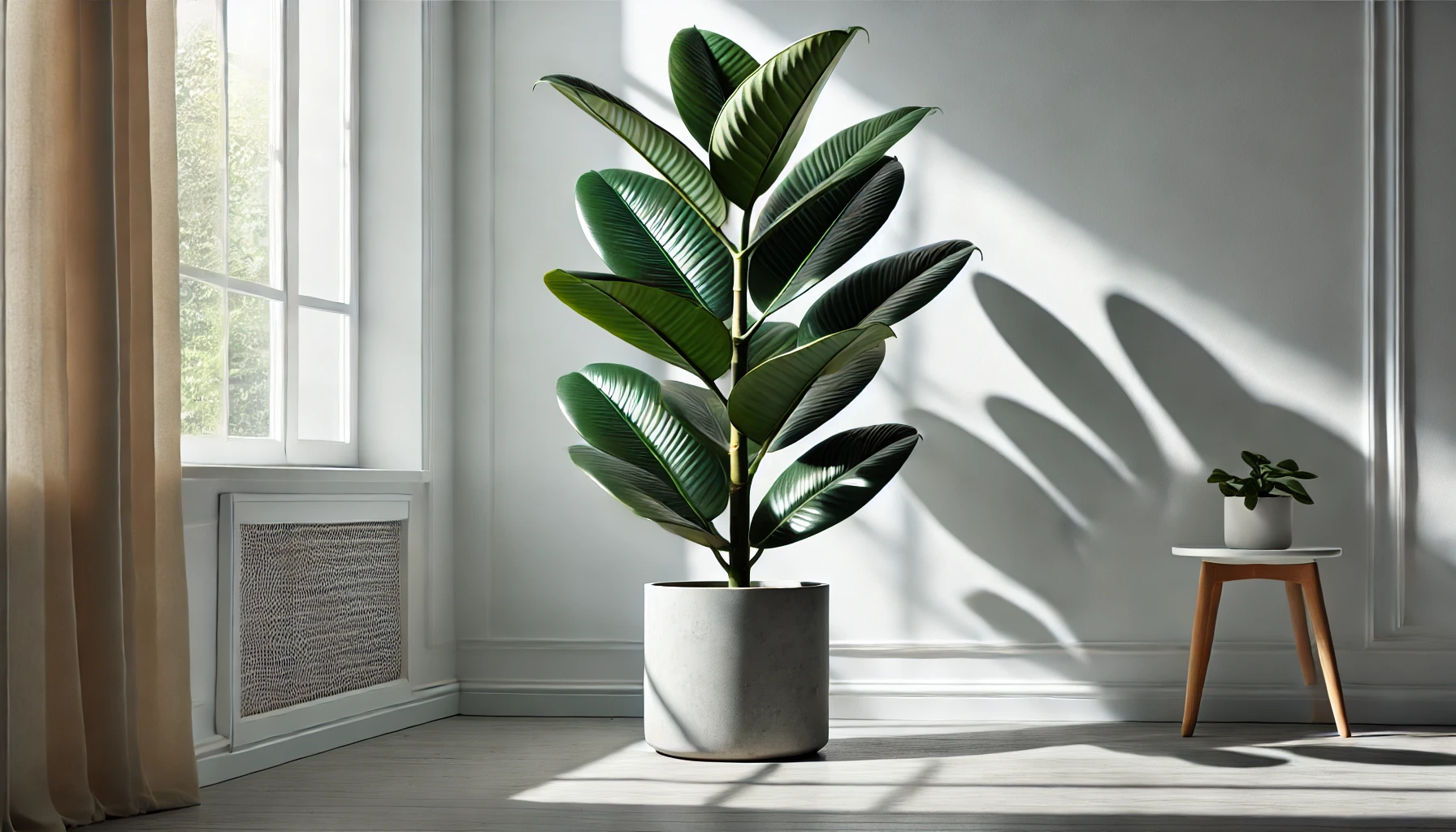
The Rubber Plant, known scientifically as Ficus elastica, is a popular houseplant renowned for its large, glossy leaves and impressive stature. With its rich green foliage and easy-going nature, the Rubber Plant can bring a touch of the tropics to any indoor space. Typically, Rubber Plants can grow up to 10 feet tall indoors, making them a striking focal point in your home or office.
A Brief History and Ideal Growing Conditions
Native to the tropical regions of Southeast Asia, the Rubber Plant has been cultivated for its beauty and its latex, which was historically used to make rubber. Today, it is a beloved houseplant around the world, admired for its robust growth and low maintenance requirements. Rubber Plants thrive in warm, humid environments that mimic their native habitat. They grow best in bright, indirect light but can tolerate lower light conditions, making them versatile for various indoor settings.
Rubber Plants and Pets: Important Information
While the Rubber Plant is a fantastic addition to your indoor plant collection, it is important to note that it is toxic to pets. If ingested by cats or dogs, it can cause oral irritation, drooling, and digestive upset. To keep your furry friends safe, ensure that your Rubber Plant is placed out of their reach.
Best Practices for Caring for Your Rubber Plant
Caring for a Rubber Plant is relatively straightforward, making it a great choice for both novice and experienced plant enthusiasts.
Watering and Humidity
Rubber Plants prefer a consistent watering schedule. Water the plant thoroughly when the top inch of soil feels dry, and ensure that excess water drains out of the pot to prevent root rot. In general, watering once a week is a good starting point, but you may need to adjust based on your specific environment. These plants also appreciate higher humidity levels. If your home is dry, consider using a humidifier or placing the plant on a tray with pebbles and water to increase the humidity around it.
Soil, Light, and Temperature
A well-draining potting mix is essential for Rubber Plants. They thrive in bright, indirect light but can also tolerate lower light conditions. Place your plant near a window where it can receive plenty of light, but avoid direct sunlight, which can scorch the leaves. Rubber Plants prefer temperatures between 60°F and 75°F. They are sensitive to temperature fluctuations and drafts, so keep them away from air conditioners, heaters, and drafty windows.
Common Problems and Remedies
Even with the best care, Rubber Plants can encounter some common issues. Yellowing leaves can be a sign of overwatering or poor drainage. To remedy this, ensure the soil is well-draining and adjust your watering schedule accordingly. Brown leaf tips can be caused by dry air or inconsistent watering. Increasing humidity around the plant and maintaining a regular watering schedule can help prevent this issue.
Rubber Plants can also be affected by pests such as spider mites, scale, and mealybugs. To combat these pests, use a water and mild soap solution or neem oil spray. Regularly inspecting your plant and wiping down the leaves can help prevent pest infestations.
Propagation and Benefits
Propagating Rubber Plants can be done through stem cuttings. Cut a healthy stem with a few leaves and place it in water or moist soil to root. Before long, you’ll have new plants to share or add to your collection.
Rubber Plants are not only beautiful but also beneficial to your indoor environment. They help purify the air by removing toxins such as formaldehyde and benzene, making them a healthy addition to your home.
Final Thoughts
Rubber Plants are one of the most striking and easy-to-care-for houseplants you can find. Their bold, glossy leaves and impressive growth make them a favorite among plant enthusiasts and interior designers alike. While they do require a bit more attention than some other plants, the rewards are well worth the effort. With the right care, your Rubber Plant can thrive and become a stunning focal point in your home. So why not add a Rubber Plant to your collection and enjoy the beauty and benefits it brings?
Stay connected with the world of plants! Subscribe to Phylofy for expert gardening tips, DIY projects, and eco-friendly inspiration. Join our community and nurture your love for nature. Don’t miss exclusive content and updates. Subscribe now!



